I made some pickles earlier this summer. I told you about the one batch of Bread and Butter pickles I made and even gave you the recipe.
It wasn’t only one batch I made. It was many batches
Only a person of very suspicious character would want to eat just one batch of pickles. The same kind of person who only eats one cookie. Or one potato chip. Or who walks around their house laughing diabolically for no reason while wearing kittens as slippers.
This week I delved into the world of fermented dill pickles. Kosher dills.
Regular dill pickles are O.K., but I was raised on Kosher dills and to me that’s what a dill pickle should taste like. I tried fermenting pickles when I first moved into my house about 15 years ago and I can tell you I have never been so excited to rot something. O.K., fermenting isn’t really rotting something, but it sounds more fun. More daring. Less hippie, more badass.
I have no idea where I got my original fermenting pickles recipe but I’m pretty sure it must have been off of a salt box, because after waiting patiently for 5 weeks for my pickles to ferment, what I ended up with were soft squishes of pickle made up of 1% cucumber and 99% salt. They were the dead sea pickles.
I never tried them again until this year.
I have a book my neighbour bought me a few years ago called Wild Fermentation: A Do-It-Yourself Guide to Cultural Manipulation (DIY). It’s the book I used to create my own yeast for sourdough starter. Since it is dedicated to all things fermented and the sourdough starter worked out, I figured the fine folks who wrote it would have a pretty good handle on the fermented Kosher dill. Plus the author’s last name is Katz.
First a little explanation of what a fermented pickle is.
Fermented pickles are made sour or half-sour naturally. There is no vinegar in the recipe (although some do include a little). You simply combine salt, dill, water and pickling cucumbers in a crock and let them sit at room temperature for around a month. Some people add garlic. I do not.
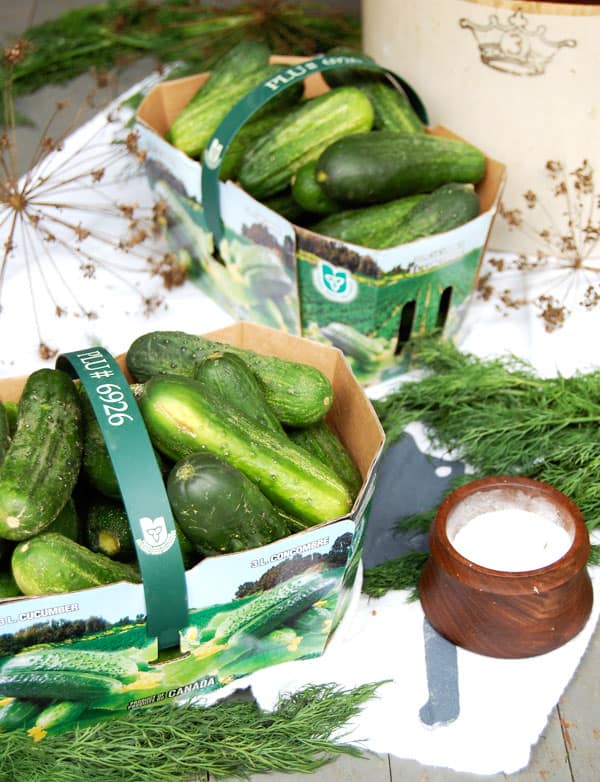
Even though I accidentally grew pickling cucumbers this year (Kirby cucumbers) I ended up having to buy cucumbers to make these pickles because my pickles plants are kapoot.
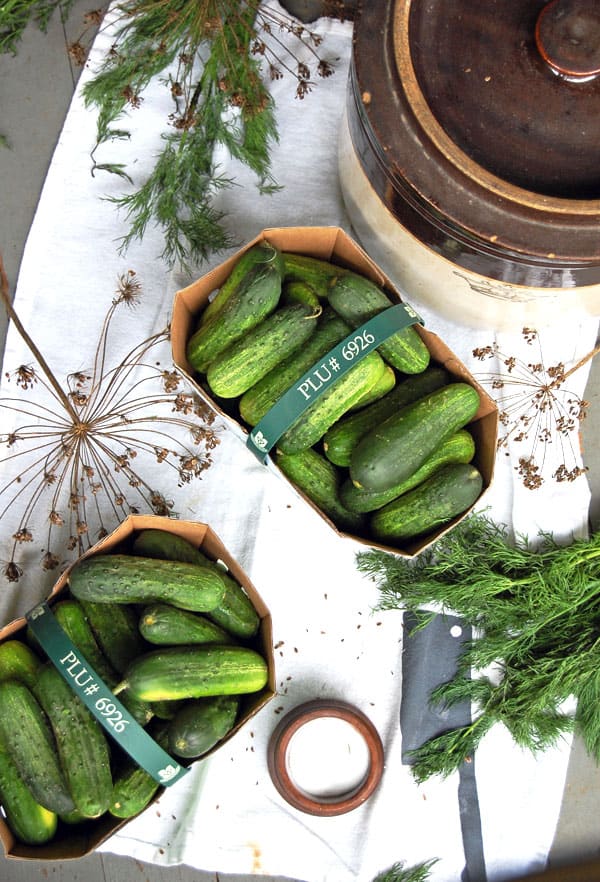
I was, however, able to provide my own dill seeds for flavouring. I grew a ton of dill in my community garden this year so I just went up there and picked the heads off of my dried up dill.
For your dill flavour in these kosher dills you can use any type of dill you can get your hands on. Fresh dill, dill seeds, dill heads, dried dill (as a last resort). But chances are if you can get your hands on pickling cucumbers, you can also get your hands on fresh dill or dried dill seeds.
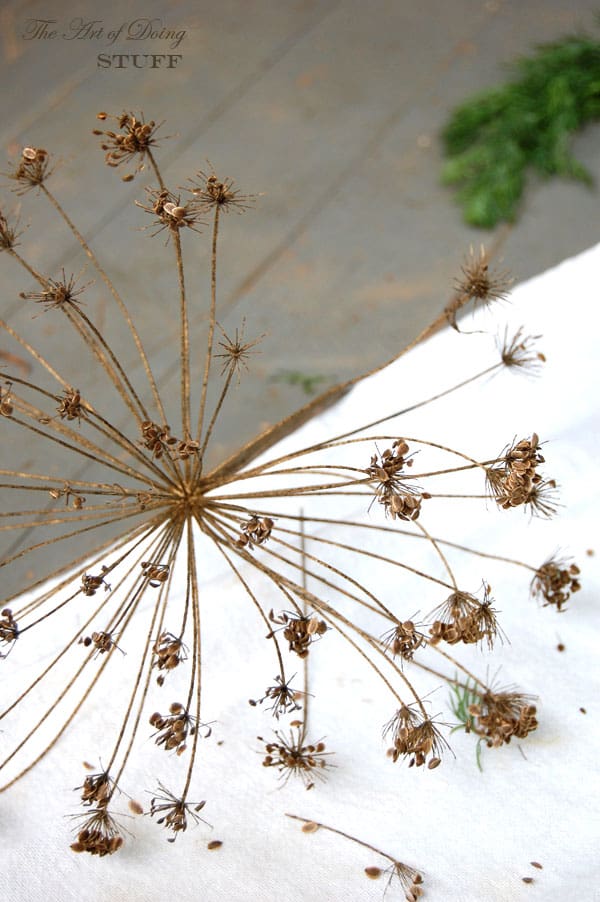
The book. If you’re gonna buy a book about making kosher dills, you wanna go with someone with a last name like Katz. Or Steinberg. Or Greenbaum. Or anything that sounds like they’d have a good grasp on challah, latkes or brisket. Jews make the best pickles. It’s not cultural stereotyping if it’s the truth and something to be jealous of.
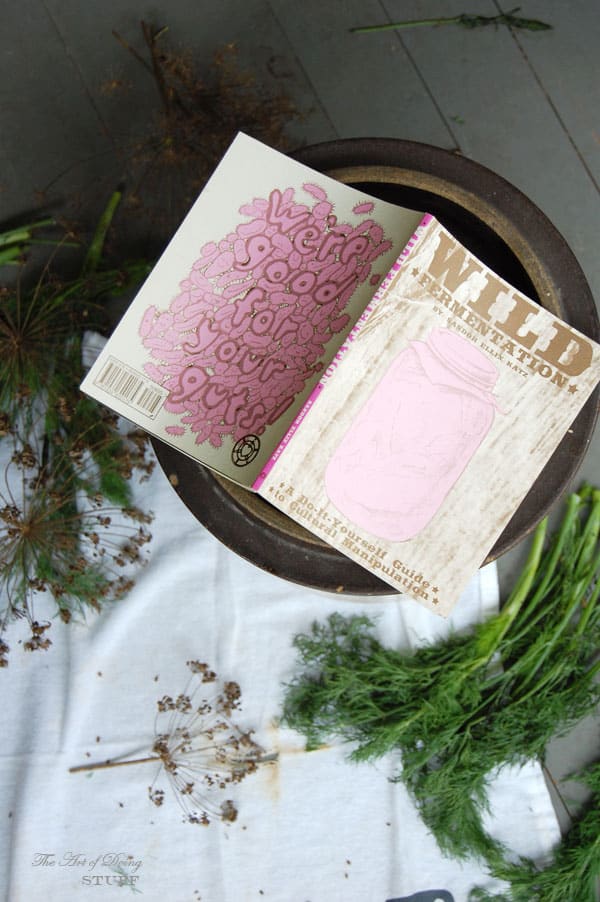
This is me. This is me making pickles. This is me making pickles by getting them ready to soak in water. If you soak your pickles in cold water for a couple of hours before putting all of your ingredients together you’ll end up with crisper pickles.
Speaking of crispy pickles (nobody likes a limp noodle), the other thing you can do to get them to stay crisp is using a leaf with tannins in it. Like grape leaves, oak leaves or horseradish leaves. Just throw in a handful.
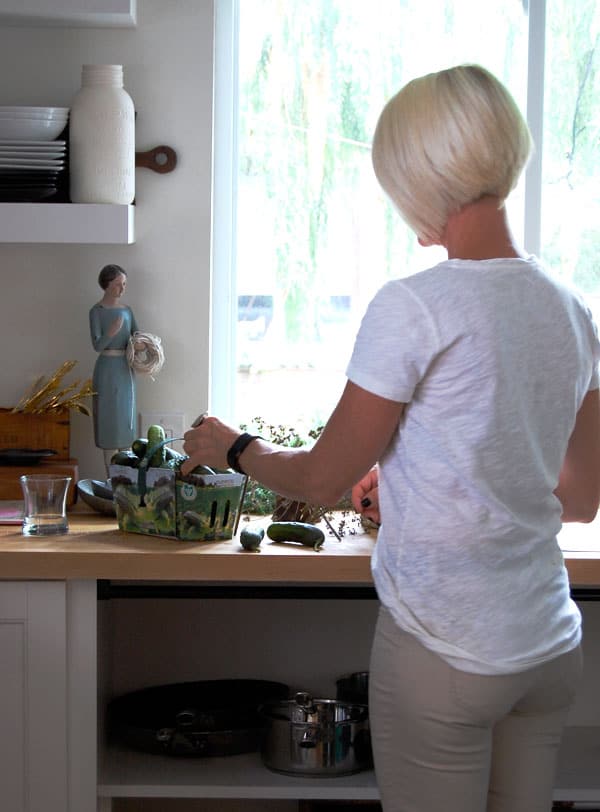
This is all there is in terms of seasoning. Salt and dill. Optional things to add are a few peppercorns and garlic.
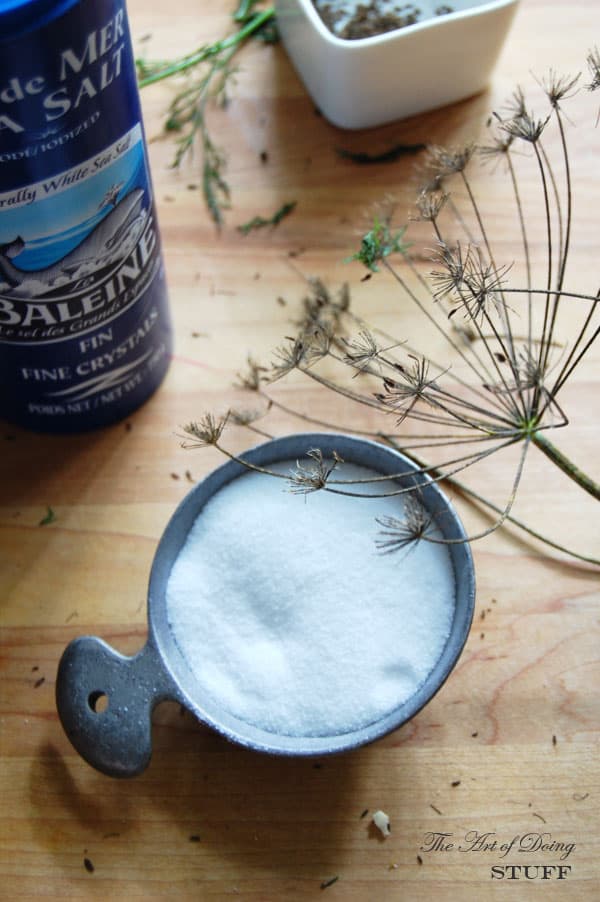
Layer everything in your crock.
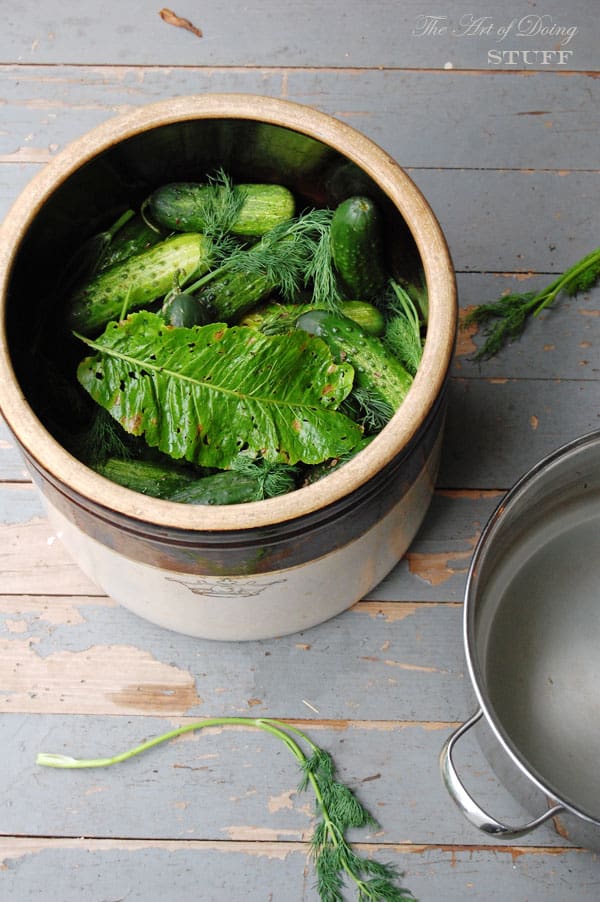
Cover the pickles with water that has the salt dissolved in it.
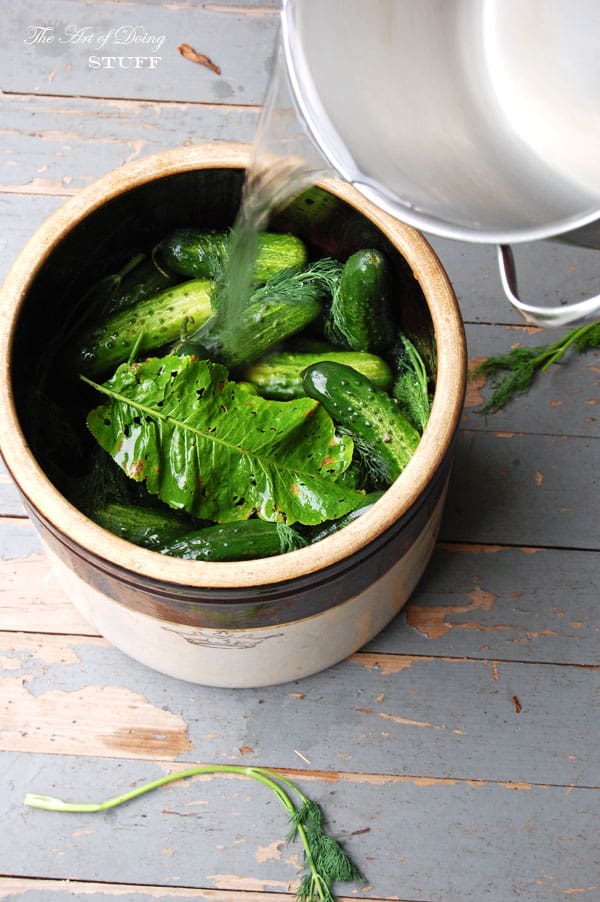
Admire the beauty that is the fledgling kosher dill.
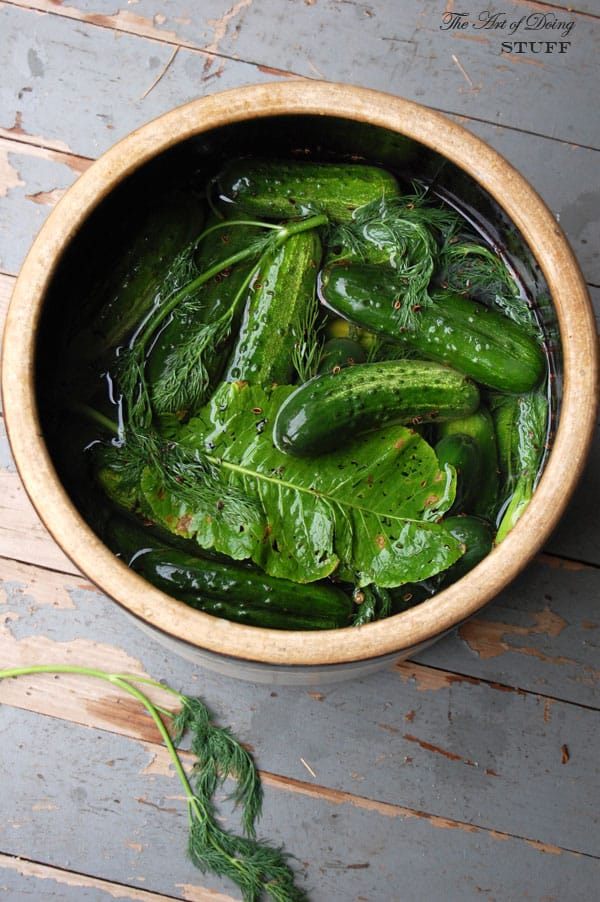
Make sure all of the cucumbers are beneath the surface of the brine by weighing them down with something. I just used a few sandwich plates stacked on top of each other.
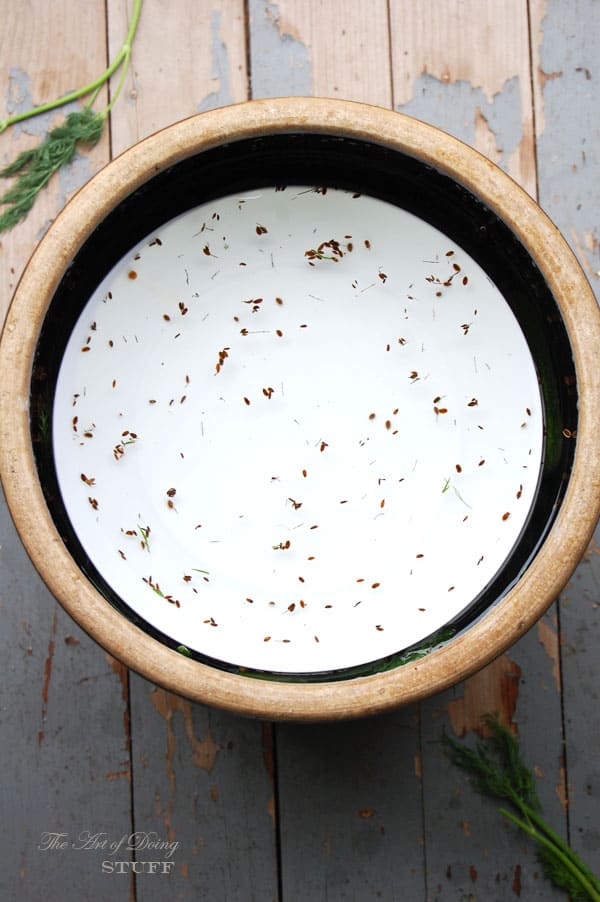
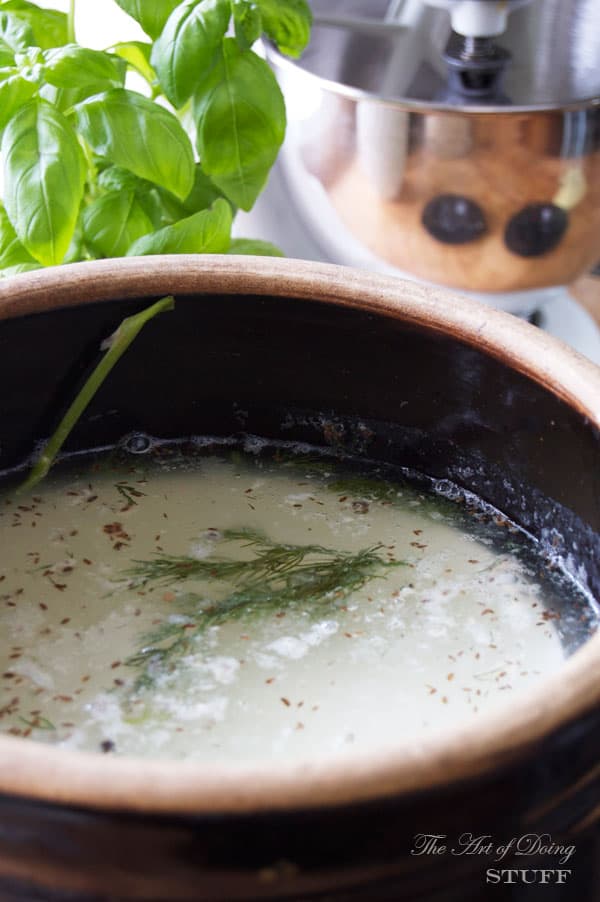
After reading Wild Fermentation I’ve figured out that what I made years ago must have been “full sour” pickles. That means they have a lot more salt in the recipe which makes them last longer. This type of recipe would have been popular back in the olden days when refrigerators weren’t around to keep pickles from going bad. So they used salt to preserve them.
The recipe I used from Wild Fermentation is for a a Half-Sour which calls for a brine that is around 5% salt, as opposed to the full sour which would call for around 10% salt or even more.
Wild Fermentation has their Kosher Dill pickle recipe online here. Read it, understand it, make it.
Mazel Tov!
Original article and pictures take www.theartofdoingstuff.com site
Комментариев нет:
Отправить комментарий